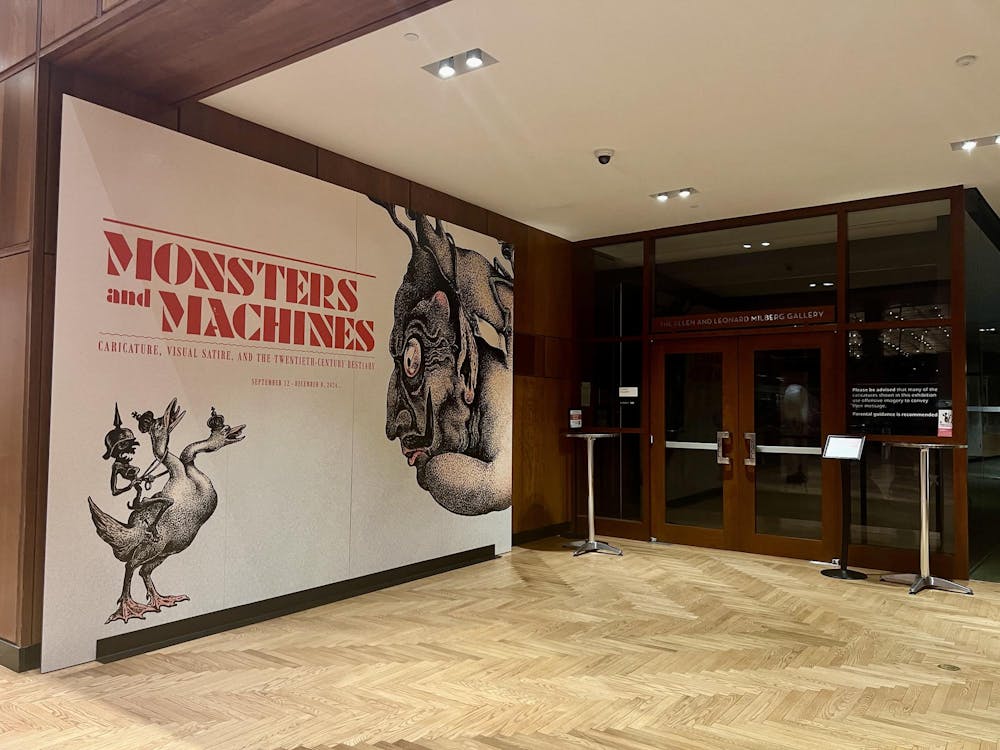For students seeking a study break without leaving Firestone Library, the Princeton University Library (PUL) is opening a new exhibit titled “Monsters & Machines: Caricature, Visual Satire, and the Twentieth Century Bestiary.” The exhibit examines bestiary, the use of animal motifs to represent human categories, in visual satire between World War I and the end of the Cold War.
The new exhibit, which has been in the works for over four years, is slated to open on Thursday, Sept. 12 in the Milberg Gallery.
Thomas Keenan, a Slavic, Eastern European, and Eurasian Studies Librarian is one of the exhibit’s curators. He wrote in informational material for the exhibit that this period “was a time of ideologically-fueled hostilities of unprecedented scale and destructive consequences that eventually brought humanity to the brink of self-annihilation.”
Bestiary is often associated with the medieval period. Artists would often present images of real and mythical animals as embodiments of moral degradation. Whether used on magazine covers, political advertisement, or newspapers, the intricate craft of ostracizing the other through bestiary iconography is seen across the globe.
The exhibit explores how the use of monsters and machines in art are expressions of fear toward dictators, authoritarian rulers, and aggressive nations. The pieces include visual humor and satire projected at adversary cultures and ideologies.
“Monsters & Machines” draws from PUL’s rich collection of 20th century posters, illustrated periodicals, and artifacts from North America, Europe, Asia, Eurasia, and the Middle East. The exhibit decodes the iconographies ranging from those of Greco-Roman antiquity to biblical to modernity.
The exhibit begins with an illustration from Dante’s “Divine Comedy.” The illustration is displayed alongside other works of visual satire from the 20th century that include human-beast hybrids and reimaginations of figures from the work.
Other galleries include themed installations of titans and tyrants, beasts, bugs, reptiles, and war machines. There are also illustrations of dogs, pigs, snakes, and octopuses.
According to Thomas Keenan, the exhibit is topical today because of “the overall sensation that the world feels polarized in a lot of ways.” Keenan remarked that the team started with the very broad idea of 20th century visual satire, spending years examining thousands upon thousands of images. They soon narrowed down the angle to what the exhibition is today.
“A lot of the images used today have a long history and a very rich history being used for centuries, such as the snake being deceitful goes back to biblical times,” Alain St. Pierre, the Librarian for History, History of Science, and African Studies, said in an interview with the ‘Prince.’
Within the exhibition, it is clear how these images have been repeated and reiterated for centuries by different countries for distinct purposes. These images, dating back to biblical times, have been adapted by different entities for a variety of pointed uses. Many works tie back into the gallery’s unifying motif of a universal desire to outcast and dehumanize the other.
Keenan stated that there is a special quality in “standing physically, in close proximity” to these things and seeing the images of this art in person. He remarks that although the “digitization efforts make the art more accessible beyond the walls of an institution”, the process “abstracts the images in a way that makes them lose their materiality.”

The location of the exhibit inside of a prominent node of campus activity, Firestone, offers more opportunities for students and community members to visit the works housed inside.
“Students can come in here on their breaks and see something that sparks their imagination, giving them an idea for a thesis or a research paper,” St. Pierre said.
Members of the public can visit the exhibition between 10:00 a.m. and 6:00 p.m. on weekdays and 11:00 a.m. to 6:00 p.m. on Saturdays and Sundays. The exhibition will be open from Sept. 12 through Dec. 8, 2024.
For more information on the exhibition, public tours, and related programming, please visit the PUL website.
Connor Romberg is an assistant editor for The Prospect from Winneconne, Wis.
Please send any corrections to corrections[at]dailyprincetonian.com.








